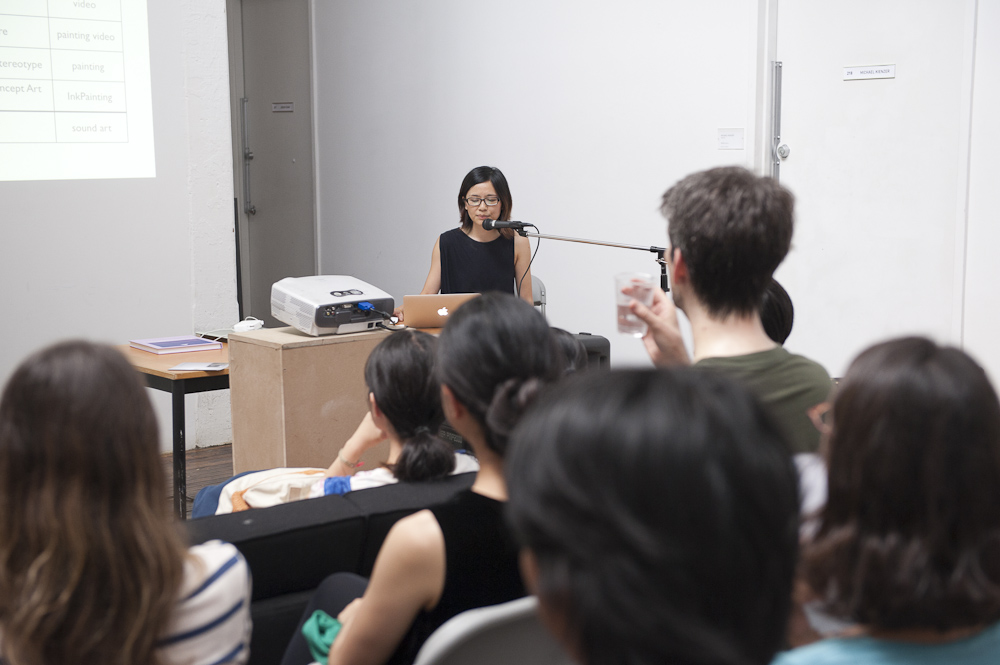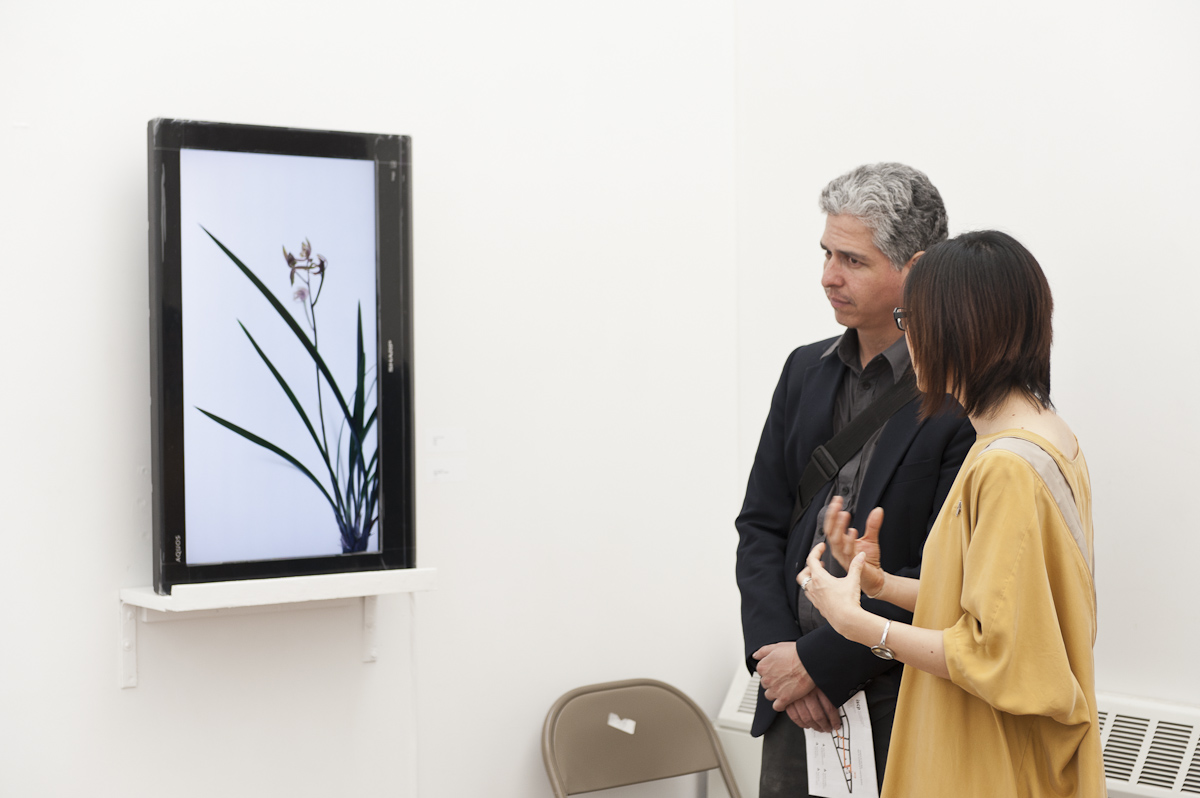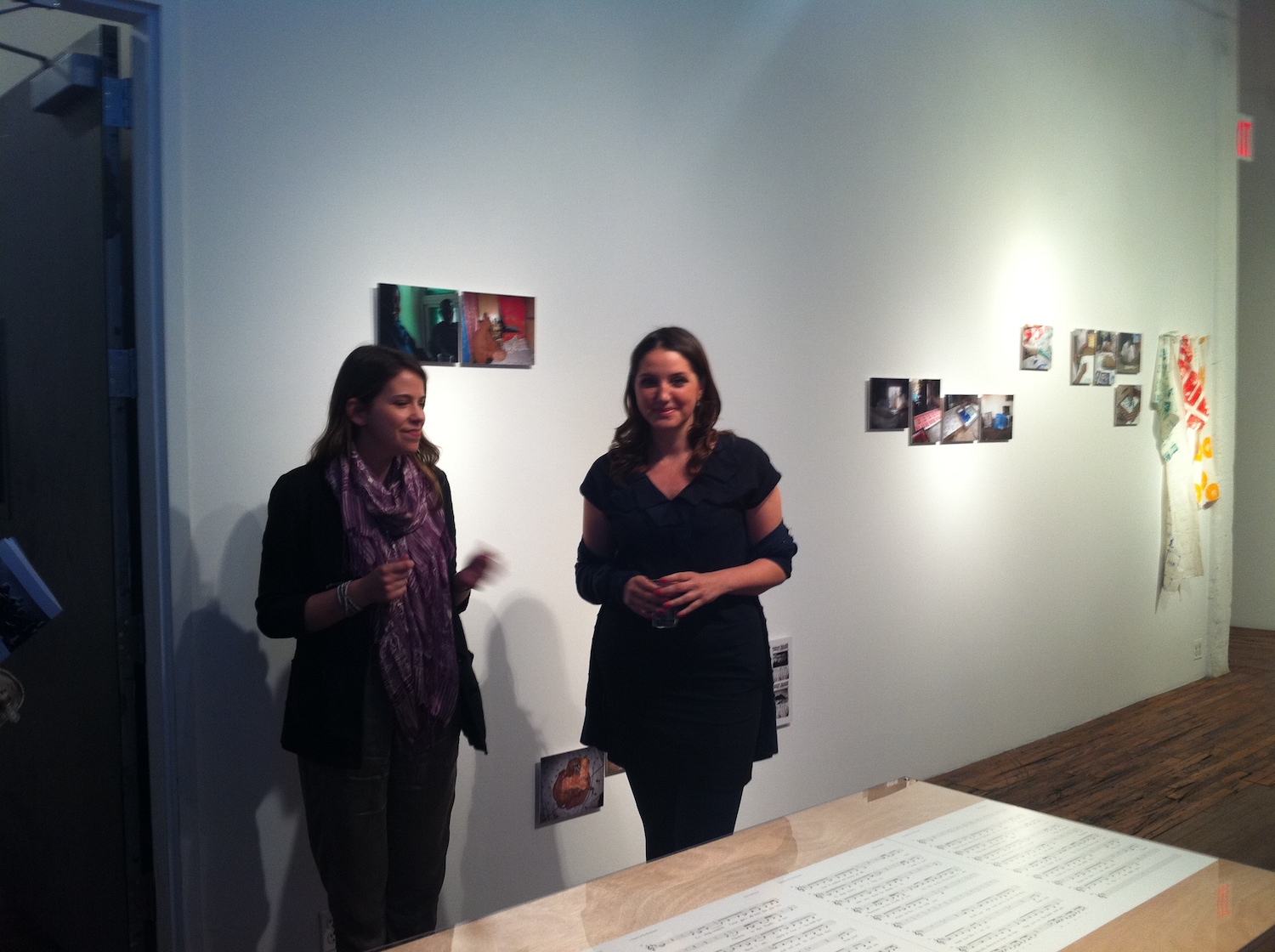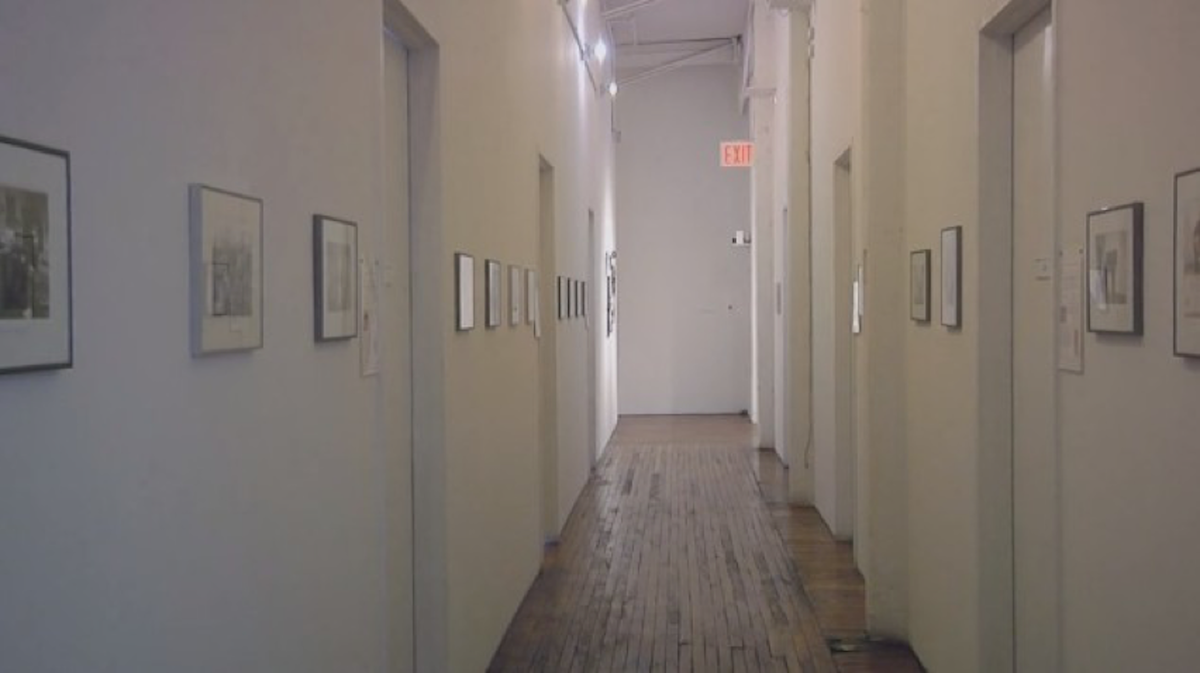1. You had a curatorial presentation during the residency. What kind of exhibition was it? Would you suggest to curators in residence that they present during their residency?
Before visiting New York, I submitted a proposal named Taiwanese Contemporary Art Project (TCA Project) to the Ministry of Culture. Therefore, I travelled with an exhibition plan. As a Taiwan-based curator to New York, I thought about asymmetry between Taiwan and New York in the art world, artistic values and reality. I planned to invite non-Taiwanese artists in New York to collaborate and exhibit their works in TCA Project (Figure 1). They appeared in real exhibition booklets, printed materials, and main visuals with fictional Taiwanese names. The opening was divided into two sections. The curator began on the first floor to introduce artworks by artists with fictional Taiwanese names. At the forum on the second floor later, artists and their real identities were unveiled. I used this performative method to touch upon fabrication and asymmetry in contemporary art from local to global (Figure 2).
 Figure 1: TCA Project exhibition, ISCP, New York, 2011
Figure 1: TCA Project exhibition, ISCP, New York, 2011
 Figure 2: The curator unveiled artists and their real identities in TCA Project and used this performative method to touch upon fabrication and asymmetry in contemporary art from local to global. Open space on the second floor, ISCP, New York, 2011
Figure 2: The curator unveiled artists and their real identities in TCA Project and used this performative method to touch upon fabrication and asymmetry in contemporary art from local to global. Open space on the second floor, ISCP, New York, 2011
The ISCP residency program always highlights open studio to attract attention from local artists and curators in New York. On the open studio day, I curated a video exhibition “Paradise: Under Re-construction” with artworks from Wu Tien-Chang, Goang-Ming Yuan, Wu Chi-Tsung, Yao Jui-Chung, Charwei Tsai, Spanish artist Gonzalo Puch, and Japanese artist Masaru Iwai (Figure 3).
 Figure 3: “Paradise: Under Re-construction” exhibited single-channel video “Still Life 002 – Orchid” by Wu Chi-Tsung.
Figure 3: “Paradise: Under Re-construction” exhibited single-channel video “Still Life 002 – Orchid” by Wu Chi-Tsung.
These experiences were valuable, and it was also great to work with administration and production teams at the residency institution. I don’t think it is necessary for residency curators to deliver something public, as each residency institution is different. It was more precise to present my stance on curatorial practice and cultural production through an exhibition. However, it may be more inspiring and creative sometimes to wander without any predetermined conditions. Young curators should take residency programs as opportunities to learn about art ecosystems in other regions. It is also a chance to engage institutions, artists, and curators in other areas and expand connections.
2. How does the residency influence your career as a curator?
Due to personal curiosity and curatorial studies, I visited many artist studios in New York with varying qualities and characters during that time. From renowned art collective Claire Fontaine to my studio neighbors, I covered expensive studios in Manhattan to abandoned factory workshops in Williamsburg. I probably visited over 50 of them. When Amy Cheng and I held the open call for 2012 Taiwan International Video Art Exhibition by Hong Gah Museum, almost all of them submitted their works. It might be the most substantial effect, but it was also the most trivial one. During this period, I met a very large number of artists, and my conversations continued with quite a few of them. For example, I met Samson Young who created classical music composition. He wrote a piece for chamber music between scores and instructions, so violinists could function repetitively like machines. After the concert, we had a conversation on regional, subjective, and political aspects in sound. Before I went to New York, I had curated a sound-related exhibition titled “Polyphonic Mosaic” at the National Taiwan Museum of Fine Arts with Nian, Li-Wen and Wu, Tsan-Cheng. I had different ideas about presenting sound works at visual-oriented museums. A few years later, some ideas were implemented in “aVanTGaRde oN sPeEd” exhibition at the Tina Keng Gallery. These were all my experiences in curatorial studies. I don’t know if I answer your question, but I think it’s helpful for artists and curators to leave their places of residence and think from other perspectives.
Knowing what will be seen and heard during traveling time is unpredictable. Residency programs encourage mobility that comes with art globalization since the 1990s, but I still benefit from inspirations in trips and connections made in residency periods until now.
 Figure 4: During my residency, Spuniko! (Ozaki Marissa Hiromi) and Aephie Huimi came to New York, as Spuniko!’s works “Menstruation Machine” and “Crowbot Jenny” were included in “Talk to Me” exhibition at MOMA. We had a meeting at my ISCP studio. I was making the exhibition booklet for TCA Project. Aephie Huimi helped me draw the exhibition layout. ISCP, 2011.
Figure 4: During my residency, Spuniko! (Ozaki Marissa Hiromi) and Aephie Huimi came to New York, as Spuniko!’s works “Menstruation Machine” and “Crowbot Jenny” were included in “Talk to Me” exhibition at MOMA. We had a meeting at my ISCP studio. I was making the exhibition booklet for TCA Project. Aephie Huimi helped me draw the exhibition layout. ISCP, 2011.
3. How does the residency help you substantially?
ISCP receives artists and curators worldwide annually and connects to local art communities via open studio. During the residency, ISCP curator Kari Conte introduced me to Washington Projects for the Arts. I gave a talk at the institution and visited member artists. Our networks grew beyond what residency organizers offered. Some networks occurred due to unexpected people, events, and occasions. It’s hard to foresee encounters or situations, or how they will develop in the future.
Recently, I invited ISCP Curator Award winner Maja Ćirić from Belgrade to give a talk at my “Art and Its Global History” class at Taipei National University of the Arts. Her speech was titled “Globalized Art World: Possibilities and Traps.” Maja was the curator for Serbia Pavilion at 2007 Venice Biennale. After receiving ISCP Curator Award, she presented “The Power to Host” exhibition to explore potential in the global contemporary art world (Figure 5). Maja is still an active curator in Belgrade.
 Figure 5: ISCP curator Kari Conte is on the left, and Maja Ćirić on the right. After receiving ISCP Curator Award in 2011, Ćirić presented an exhibition, The Power to Host, at ISCP to explore potential in the contemporary art world globally.
Figure 5: ISCP curator Kari Conte is on the left, and Maja Ćirić on the right. After receiving ISCP Curator Award in 2011, Ćirić presented an exhibition, The Power to Host, at ISCP to explore potential in the contemporary art world globally.
4. What do you care the most about residency programs now?
I care about whether residency organizers can provide professional and efficient art networks, and whether I can find like-minded people for conversations and collaborations
Author: Jau-lan Guo
Edited: Brix

